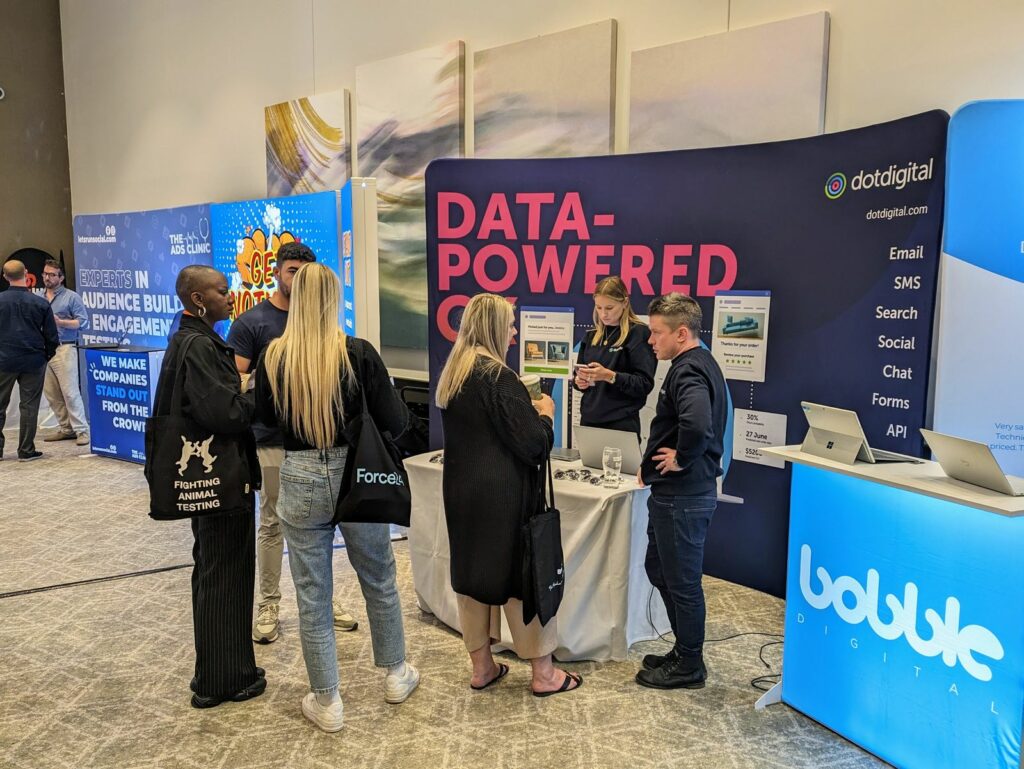I’m Barry Faulkner, an Account Executive at Dotdigital, and I recently had the pleasure of presenting at the Marketing Showcase in Southampton. The energy at the event was fantastic. The room was filled with enthusiastic marketers eager to learn about the latest trends and technologies to elevate their marketing campaigns.
1. Get serious about data
In my session, I urged the audience to get serious about data. Customers generate a ton of valuable marketing and transactional data (especially zero-party data that brands responsibly collect with their permission) across various channels. But the challenge lies in extracting meaningful insights that can be used to make an impact.
Imagine unifying data from your website, app, SMS, point of sale (POS) software, and more. This powerful combination unlocks a deep understanding of your customers’ intentions and buying trends. You can then leverage marketing automation to make informed decisions, conduct A/B tests, and target specific customer segments with the right actions. This ultimately leads to better customer engagement, trust, loyalty, and increased sales.
As I explained, connecting the dots across all customer touchpoints is key. Whether it’s the website, WhatsApp, email, or newsletters, providing a consistent and personalized experience across all these channels creates a fantastic shopping journey.
2. Personalization and hyper-targeting
Research from McKinsey shows the power of personalization. A whopping 71% of consumers expect brands to deliver personalized experiences, and 76% get frustrated when they don’t.
Think about it: how annoying is it to sign up for a newsletter and receive it late or not at all?
Personalization, at its core, is simply following the trail of breadcrumbs your customers leave behind and using them to deliver relevant content at the right time. I shared three key strategies to achieve personalization at scale:
- Content customization: Tailor messages or offers based on customers’ interests, purchase history, demographics, and location. Take it a step further with geotargeting to push relevant recommendations or offers via the most appropriate touchpoint when a customer is near a specific store.
- Dynamic content: Automatically populate email newsletters with information and offers relevant to individual customers or similar customer segments.
- Automated, triggered messages: Deliver timely messages based on customer behaviors like website visits, blog reads, or link clicks.
It’s surprising how many brands still miss out on the benefits of personalization, customization, and automation. Even simple techniques like personalizing email subject lines can make a huge difference.
A personalized subject line is 50% more likely to be opened. Different subject lines can also be A/B tested (e.g., does using an emoji impact response rate?) to refine messaging and improve open rates.
I showcased the power of data-driven marketing automation with real-world results. A UK holiday company and Dotdigital customer, Parkdean Resorts, ran a 12-day campaign using personalized messages, creative assets, and geotargeting across various touchpoints. This resulted in a phenomenal 815% return on investment, a 145% increase in conversions, and nearly 20% revenue growth.
3. Artificial intelligence and machine learning
While AI and machine learning are still evolving, I urged attendees to consider their potential. These technologies are here to stay and are rapidly developing.
Imagine tools that:
- Fix your spelling and grammar
- Recommend phrasing based on past successes
- Suggest tonal adjustments (empathetic or playful?)
AI is a lifesaver for busy marketers, ensuring consistent high-quality output. I emphasized that these capabilities, and many more, are being integrated into marketing automation platforms for even greater ease of use.
But AI’s potential goes beyond content creation. Its ability to analyze vast amounts of data from various sources and uncover insights is a game-changer.
4. Sustainability and social responsibility in marketing
The room was packed until the very end. I wrapped up by highlighting a growing trend: customer focus on a brand’s values. This includes a company’s approach to sustainability, social and environmental issues, and charitable causes.
Transparency in communicating these efforts has a double benefit: it raises awareness of important issues while strengthening customer engagement, loyalty, and trust. Ultimately, these factors can differentiate your brand and boost sales.

The Dotdigital team was busy from the moment the doors opened. We welcomed marketers from various sectors, including charities and retailers, to the stand. Everyone was eager to learn more about data-powered customer experience (CX).
Thank you to everyone who joined us in Southampton. If you were one of the many people who took home one of our Dotdigital Winston mascots, please share photos with us. We would love to see where he is living now.

